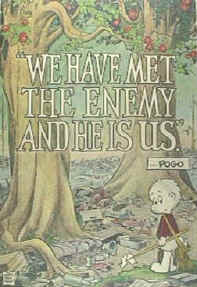..when applied to Lean Sales and Marketing. We have all heard the saying attributed to John Wanamaker, a department-store magnate in the late 19th century, famously said that half the money he spent on advertising was wasted, but that he didn’t know which half. That theory is substantiated in a blog post, Why Should 50% of your marketing should fail (statistical proof offered by by Don Reinertsen). So I would offer a simple explanation that we do need variation for sales and marketing to work. But it goes much deeper than that, it is the thought of the average customer.
When continuous improvement is applied to sales and marketing most think about reducing waste and segmenting customers. As Deming said, “Variation is the enemy”. Sales and marketing is a process. If we can reduce the variation and the inputs to a process, we increase the predictability of the outputs and it makes it a whole lot easier to manage those processes. As a result, we can focus on things that really do need our attention.
This is supply-side thinking. We segment out customers till we can define the “average” customer”. People that understand variation know that average is a poor measure. You could have one foot in boiling water and another in ice cold water and on average you are ok. So why do we market to the average? It makes it easier!
If we focus on Demand thinking, we must focus and embrace variation. We must ask ourselves how our customers differ and how their experiences differ. Focusing on these differences and grouping them accordingly offers us a chance to market to a broader spectrum.
An exa mple of this is the philosophy of Mass Customization. From Wikipedia:
mple of this is the philosophy of Mass Customization. From Wikipedia:
Mass Customization is the method of effectively postponing the task of differentiating a product for a specific customer until the latest possible point in the supply network.” (Chase, Jacobs & Aquilano 2006, p. 419). The concept of mass customization is attributed to Stan Davis in Future Perfect and was defined by Tseng & Jiao (2001, p. 685) as “producing goods and services to meet individual customer’s needs with near mass production efficiency”. Kaplan & Haenlein (2006) concurred, calling it “a strategy that creates value by some form of company-customer interaction at the fabrication and assembly stage of the operations level to create customized products with production cost and monetary price similar to those of mass-produced products”.
In a Demand Driven world, organizations must embrace customer variation. They must encourage it and make provisions for variation to increase. This is a key strategy in a demand driven world. It is where you find new customers and is a key to you innovation. Variation is not the enemy. WE HAVE MET THE ENEMY AND HE IS US. Embrace Variation; do not try to rid yourself of it.
Related Information:
Lean Marketing: Sales Quotas lead to Waste
Understanding Variation: The Key to Managing Chaos
Creating Flow with Don Reinertsen
Why should 50% of your marketing fail?

I think that you are using the word variation when the best word for what you are saying is “variety”
Variation is a black sheep.
Variety is the spice of life.
We can and should segment customers into groups of some homogeneity. The spectrum of groups gives us the variety of customers.
Inside each group, even inside each customer we have variation because humans or organizations of humans are not newtonian machines to whom time has no influence in behaviour.